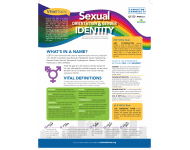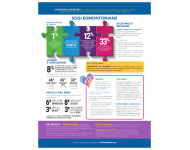The annual Alberta Poverty Report is an annual report created by the Edmonton Social Planning Council, in partnership with Public Interest Alberta and the Alberta College of Social Workers. This report finds that Alberta remains to have the largest gap between the rich and the poor of all the provinces, with the richest 1% earning 46 times the poorest 10% of the provincial population, relative to other Canadian provinces. The purpose of this report is to inform the public and policy makers the effects of poverty, the current governmentâs attempts at reducing poverty, and to present the areas and programs in which they can improve on.
Various challenges are still prevalent in Alberta despite the multiple solutions implemented by the Government of Alberta. As poverty costs Albertans about $7.1 to $9.5 billion per year, government programs that tackle the root causes of poverty can provide the necessary resources for the next generation to thrive as well as break the cycle of poverty.
Some of the key findings in this report are as follows:
- Over one in six Albertan children live in poverty. From 2006 to 2016, the number of children in Alberta living in poverty has grown 23.4%. Although the new Canada Child Benefit has resulted in a modest reduction of child poverty across the nation, Alberta did not have the same reduction between 2015 and 2016.Â
- Alberta is one of two provinces that does not have a provincial poverty reduction strategy, even though one was identified as a priority under the 2013 Social Policy Framework. A provincial strategy would promote real action to address poverty, including leveraging and coordinating investments, resources, government initiatives, and various communities and stakeholders.
- Indigenous, racialized, and LGBTQ2S+ communities and women are disproportionately affected by poverty. 24.1% of Indigenous children live in poverty but the numbers may likely be higher as census data does not include children living on reserves. Moreover, 17% of visible minority children live in poverty. Similarly, LGBTQ2S+ youth are disproportionately overrepresented in the homeless population at 25%-40%.
- Lone parent families experience higher rates of poverty compared to other family types. For instance, low-income lone parents with one child have an income that is about $13, 324 lower than the poverty line in 2016. Additional barriers faced by female-led families include unequal pay, working fewer working hours due to familial responsibilities, discrimination based on gender, race, and/or sexual orientation or identification.
- Three-quarters of workers who benefit from the minimum wage increase are 20 years or older, with more than 40% falling within core working age of 25 to 54. A large majority of low wage earners are women, 37.2% have children, of which 12.2% are single earners.
- Income support demand has increased by 65% since 2014. Consequently, Albertaâs income support rates are among the lowest in all of Canada. Even with a promising policy change through Bill 26, which would increase financial support for Albertans needing it, single adults receiving AISH will still be below the poverty line after the increase in 2019.
- Despite the GoAâs efforts in ending homelessness, there are still 5,735 people experiencing homelessness, based on April 2018 Alberta point-in-time homeless count, 11% of which were under the age of 18.
- In the two largest cities in Alberta, a significant cost is paid towards early childhood education, with the median monthly preschooler fees at $1,000 and $885, in Calgary and Edmonton, respectively.
- Even with the Small Class Size Initiative, class sizes have not actually been reduced, which may negatively affect childrenâs school performance and encourage drop-out apathy from teachers. Similarly, there is a significant gap between the high school completion rate for First Nations, Metis, and Inuit students at 60.2% compared to the provincial rate of 83.4%
- $1.2 billion of poverty costs in Alberta go towards health care. 4.5% of Albertans spend 3% or more of their income on out-of-pocket prescription drug expenses, but this is much higher for those in the lowest 25% of income earners, with 16.6% of Canadians spending more than 3% of their income on prescription drugs. In Alberta alone, about half of the population under the age of 25 are uninsured and likely a large proportion of them are ineligible for private coverage and forego public premiums.
ESPC Documents/PUBLICATIONS/A.06.G REPORTS/Alberta Poverty Report 2018.pdf

